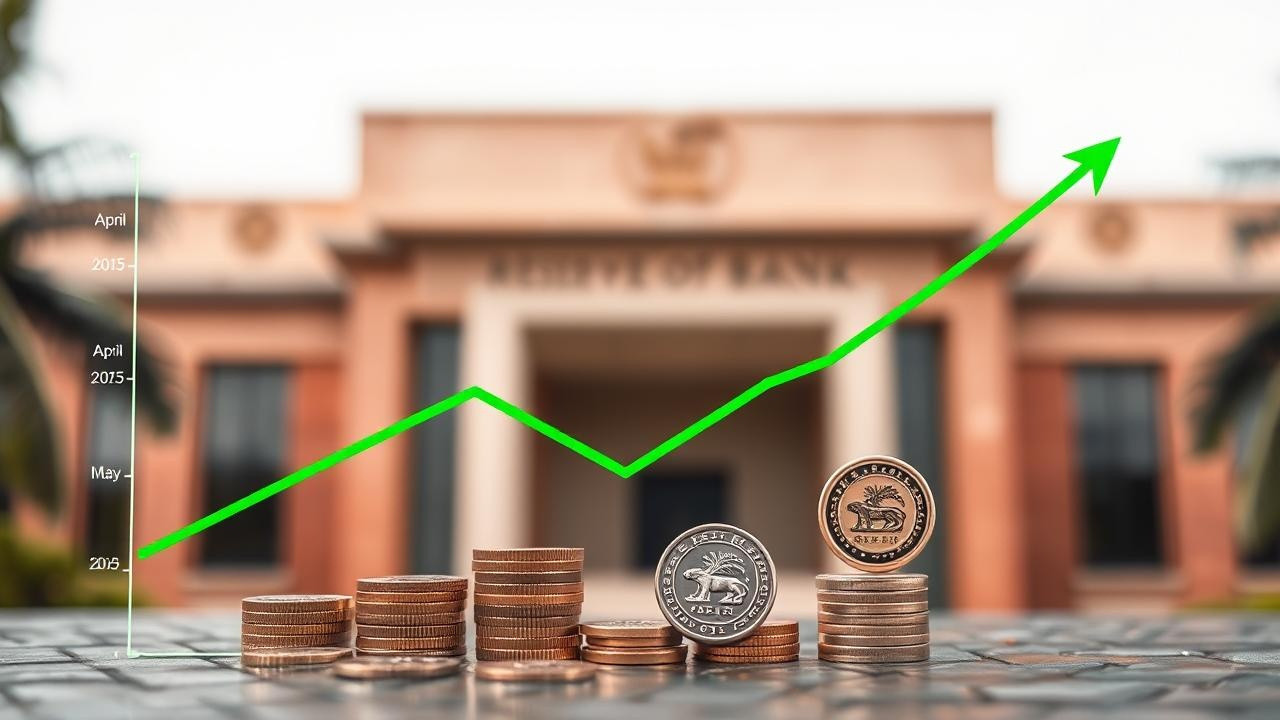India’s fiscal deficit dramatically decreased to 0.8% of the annual target by May 2025, primarily due to a record dividend of Rs 2.69 lakh crore from the RBI. Total government receipts reached Rs 7.32 lakh crore, while expenditures totaled Rs 7.46 lakh crore, including significant allocations for interest payments and subsidies.
India’s Fiscal Tightrope Walk: A Promising Start to the Year?
The government’s fiscal house seems to be in slightly better order than anticipated, at least judging by the latest figures. India’s fiscal deficit, that perennial balancing act between income and expenditure, has clocked in at a reassuringly low 0.8% of the full-year target by the end of May. This offers a sliver of hope that the nation is keeping its finances in check, even as it juggles ambitious growth plans and pressing social needs. But what’s really behind this positive surprise, and can we expect this trend to continue?
The headline grabbing reason for this improved fiscal picture comes down to a hefty dividend payout from the Reserve Bank of India (RBI). The RBI, acting as the government’s banker and monetary authority, often distributes its surplus profits back to the exchequer. This year, that distribution was particularly generous, providing a welcome injection of funds that helped to significantly narrow the gap between government spending and revenue.
But, relying solely on RBI dividends for fiscal stability isn’t a sustainable long-term strategy. While it provides a short-term boost, it doesn’t address the underlying issues of revenue generation and expenditure management. Think of it like winning the lottery – great for a one-off splurge, but not a reliable income stream.

So, what else is contributing to this seemingly positive trend? On the revenue side, tax collections seem to be holding steady. While detailed breakdowns are still emerging, early indications suggest that both direct and indirect tax revenues are contributing to the national income. This points to a resilient economy that, despite global headwinds, continues to generate economic activity. However, we must also acknowledge that government policies and their effectiveness contribute to the final outcome.
Of course, the fiscal deficit is a complex beast, influenced by a multitude of factors. Government spending, particularly on infrastructure projects and social welfare programs, plays a significant role. While these investments are crucial for long-term growth and development, they also put pressure on the fiscal balance. The government therefore has to walk a tightrope, balancing the need for fiscal prudence with the imperative to stimulate the economy and provide essential services. We discussed the role of infrastructure spending in previous analysis; learn more about the [impact of government infrastructure projects on economic growth](internal-link).
What about the months ahead? Can we expect this trend of a contained fiscal deficit to persist? The answer, as always, is nuanced. Several factors could influence the fiscal outlook in the coming months. Global economic uncertainty, fluctuating commodity prices (especially oil), and evolving geopolitical tensions all pose potential risks. A significant slowdown in global growth, for instance, could dampen export demand and impact tax revenues. Similarly, a sharp rise in oil prices could strain the government’s subsidy burden.
Moreover, the monsoon season, so vital to India’s agricultural sector, will play a crucial role. A deficient monsoon could lead to lower agricultural output, impacting rural incomes and potentially increasing the demand for government support programs. All of these elements will be determining factors in reaching the target set by the government.
Therefore, while the initial figures are encouraging, it’s far too early to declare victory. The government needs to maintain a vigilant approach, focusing on sustainable revenue mobilization, efficient expenditure management, and proactive risk mitigation. Relying on windfall gains like the RBI dividend isn’t a viable long-term strategy. Instead, the focus should be on building a robust and resilient fiscal framework that can withstand external shocks and support India’s ambitious growth aspirations. To achieve those goals, hard work and smart planning are essential.
The narrowing of India’s fiscal deficit is a welcome sign, but the road ahead remains challenging. Whether the government can maintain this trajectory depends on a delicate balance of economic management, global factors, and a bit of good fortune. Ultimately, a sustainable fiscal future requires more than just short-term fixes; it demands a commitment to long-term planning and responsible financial stewardship.







